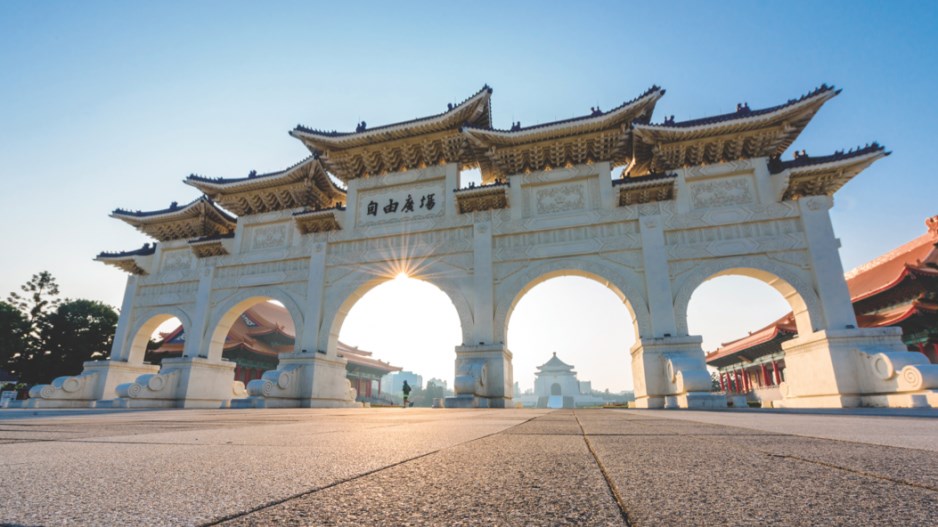With B.C. increasingly trying to diversify its trade with future high-growth markets like Southeast Asia, officials from one Asian economy are urging Canadian small and medium-sized businesses (SMEs) to not go it alone, but rather consider partnering with a third market that can act as a bridge.
That’s the pitch made by the head representative of Taiwan in B.C., Andy K.I. Chen, recently named director-general of the Taipei Economic and Cultural Office (TECO) in Vancouver. Chen, whose previous postings included Southeast Asian nations like the Philippines and Brunei, said Taiwan may be the ideal jumping-off point for B.C. SMEs looking to expand their Asian horizons beyond mainland China, Japan and South Korea.
“We understand the market there because we’ve been there a long time,” Chen said, noting Taiwan’s proximity to Association of Southeast Asian Nations (ASEAN) countries and its long history of investment and trade in the region. “Taiwanese merchants’ network in Asia is very, very well-established, and that includes large portions of Southeast Asia and mainland China. So if you are selling goods and services to Taiwan, you are not necessarily just selling to Taiwan.”
The pitch coincides with Taiwan’s own shift of investment and trade focus to ASEAN from mainland China in 2016 after current president Tsai Ing-wen took office. Tsai’s rocky relationship with Beijing means that Taiwan has been actively looking to diversify southwards into ASEAN (mainland China, which claims Taiwan as a rebel province, is also the island’s largest trade partner).
Taiwanese communities and businesses have significant presence in markets like Vietnam, Indonesia, Thailand, Singapore and Malaysia, while its proximity to the Philippines has meant close interaction between the two markets.
Estimates put the Taiwanese community in Indonesia at 510,000 in population, and the number in Thailand (140,000), Vietnam and Singapore (60,000 each) is also high enough that those communities are being touted as a potential conduit for western businesses first acclimatized to the Taiwanese market.
Chen added that Taiwan also fits B.C.’s business profile in another way – SMEs dominate the island’s economy, making up more than 97% of the region’s firms. That profile is similar to those in B.C. and Canada, and Chen said that likeness means it may be less intimidating and more productive for Canadian SMEs – already dealing with the pressure of going abroad – to land in Taiwan first before targeting ASEAN.
“If you deal with markets like South Korea, Japan and mainland China, you are dealing with state-owned enterprises or massive conglomerates on a multinational scale,” Chen said. “As an SME, it’s much easier to deal with the corporate culture and procedures of other SMEs, and that’s why I think there’s a match here for Canadian businesses looking at an entry point in Asia…. With a major conglomerate, you are under constant pressure to provide volume. You won’t face that gap here.”
There are up to 173,000 residents of Canada who self-identify as Taiwanese Canadian; that diaspora population is larger than all but two of the Canadian communities from ASEAN countries (Philippines, 837,000, and Vietnam, 241,000).
For three of the five ASEAN countries with diplomatic representatives in B.C. – Indonesia, Thailand and Malaysia – the lack of large diasporas in this province had been identified in the past as a roadblock for the promotion of closer business links. During a visit last year, Rahardjo Siswohartono, director of the Indonesia Investment Promotion Center in New York, told a gathering in Vancouver that he’d like to see Canadian businesses’ understanding of his homeland extend beyond capital city Jakarta and vacation hot spot Bali – which is difficult given the lack of a large Indonesian community here.
“If a Canadian business wants to enter the service industry here, Jakarta and Java island is still the best location,” Siswohartono said. “But other than that, if you are looking at the tourism sector – and I know many Canadians know about Bali – we have many other locations that we are putting our focus on.”
Despite the challenges, ASEAN markets have been more active in recent years in promoting themselves in B.C. The Philippines Canada Trade Council, for instance, last month invited famed Filipino economist Bernardo Villegas to speak to Vancouver’s business community in an attempt to drum up Canadian investment in the country.
TECO’s Chen said Southeast Asia’s size, costs, talent and potential for development all combine to make it an attractive market to pursue for aging, industrialized economies like Taiwan and Canada.
“The mainland Chinese market’s labour costs are starting to creep upwards, and with the trade conflict with the United States as a background, the human-resource advantage, especially when considering cost, is firmly moving to ASEAN,” Chen said. “Taiwan is facing the same issues, and that’s why we’ve already been shifting towards places like Southeast Asia…. So entering Taiwan in some ways is akin to a first step onto the doorstep of ASEAN; if your product can sell in Taiwan, it will sell in ASEAN.”
According to Industry Canada, Taiwan is currently Canada’s fifth-largest trade partner in Asia, with a combined value of imports/exports reaching $7 billion in 2017, behind mainland China ($93 billion), Japan ($29 billion), South Korea ($14 billion) and India ($8 billion). •




